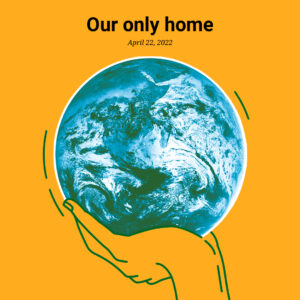To Condem or Not to Condem?
The theme for this week’s debate was “future humans, looking back on our early-mid 21st Century design considerations and actions, will thank us rather than condemn”. I believe that future humans will without doubt condemn us for our design considerations of the 21st century. Sure, we have made some positive changes that point us in the right direction, like being more mindful about sustainability within the design field. But overall, the changes we have made have not been significant enough to regenerate the negative impacts our design decisions have already left on our natural environment.

Our Only Home (UN Climate Action, 2024)
The earth’s temperature is still rising at an uncontrollable rate, carbon emissions are extremely high, we are dependent on fossil fuels, plastic is taking over our oceans. All these things are still causing large scale impacts on the planet. According to UN Climate Action we are “losing species at a rate 1,000 times greater than at any other time in recorded human history”, risking the extinction of many species in the years to come. (UN Climate Action. 2024) We are facing a future with a loss of biodiversity, a lack of natural resources and extreme weather conditions. This does not leave a positive impression on future generations that we did all we could to help solve the problem.
Berners-Lee talks about how our society has had decades of knowledge and warnings about the impacts of our behaviour on climate change yet “we have wasted that time through our denial, first of the problem itself and then of the nature of the solution that is required”. The only way for future designers not to be condemned is for us to completely re-think our approach to the whole design process. (Berners-Lee, M. 2019)

New Climate Story (UN Climate Action, 2024)
We still make design choices that are convenient, consuming products and materials at a rate that is completely unsustainable to our natural environment. Designers have the power to drastically change the future of the planet by educating ourselves on these problems and designing with a holistic, cradle-to-cradle approach. Understanding where the products and materials we choose have come from, where they end up, and the agency they possess, is the only way to design responsibly and create significant changes. This approach to design makes it possible to reduce waste, reuse materials, and recycle objects throughout a project, creating a mindful and considered design practice. If we do not want to be condemned by future generations, we need to make these changes to the way we design now. We can no longer approach design with an uneducated naivety that doing the minimum will be ok, if we want to secure the future of our planet.
Bibliography:
Berners-Lee, M. (2019) There Is No Planet B: A Handbook for the Make-or-Break Years. Cambridge: Cambridge University Press.
UN Climate Action. (2024). Causes and Effects of Climate Change https://www.un.org/en/climatechange/science/causes-effects-climate-change Accessed on 22/11/2024